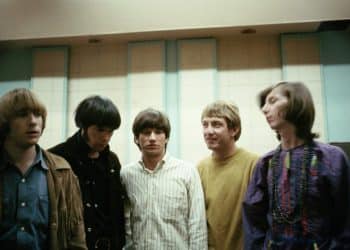David Bowie is widely considered one of the most iconic and influential musicians of the 20th century. Over the course of his prolific career, Bowie reinvented himself time and time again, exploring different genres, personas, and aesthetics that pushed the boundaries of music and art. From the glam rock of Ziggy Stardust to the experimental electronica of Low, Bowie’s music always maintained a distinctive and compelling edge that captivated audiences around the world.
In this article, we take a look at the 20 best David Bowie songs of all time. Drawing from his extensive discography spanning over five decades, we explore the tracks that have defined Bowie’s legacy and continue to inspire generations of fans and musicians alike. From classics like “Space Oddity” and “Heroes” to deeper cuts like “Blackstar” and “Station to Station,” this list represents the best of Bowie’s diverse and ever-evolving body of work. Whether you’re a lifelong fan or new to his music, these songs are a testament to Bowie’s enduring impact and artistic vision.
1. ‘Sound and Vision’
“Sound and Vision” is a song from David Bowie’s 1977 album “Low,” which is widely regarded as a masterpiece of experimental electronic music. The track is driven by a pulsing, hypnotic rhythm and features Bowie’s distinctive vocals layered with a variety of synthesizers and other electronic instruments. The lyrics explore themes of alienation and disconnection, with lines like “Don’t you wonder sometimes ’bout sound and vision?” The song’s innovative production and catchy melody have made it a fan favorite and a staple of Bowie’s live performances over the years.
2. ‘Changes’
“Changes” is a classic David Bowie track from his 1971 album “Hunky Dory.” The song is driven by an upbeat piano melody and features Bowie’s iconic vocals and poetic lyrics. The track is a celebration of individuality and self-expression, with Bowie urging listeners to embrace change and take risks in their lives. The song’s catchy chorus and timeless message have made it a beloved anthem for generations of fans, and it remains one of Bowie’s most recognizable and enduring hits. “Changes” is a testament to Bowie’s artistry and his ability to connect with listeners on a deeply personal level.
3. ‘Ziggy Stardust’
“Ziggy Stardust” is the title track from David Bowie’s 1972 concept album, which tells the story of a fictional rock star named Ziggy Stardust. The song is a driving, guitar-heavy rocker that features Bowie’s iconic vocals and poetic lyrics. The track tells the tale of Ziggy’s rise to fame and his eventual downfall, and is packed with vivid imagery and a sense of otherworldly energy. “Ziggy Stardust” has become one of Bowie’s signature songs and a classic of the glam rock genre. Its powerful riffs and memorable chorus continue to inspire and captivate listeners to this day.
4. ‘Ashes to Ashes’
“Ashes to Ashes” is a haunting and enigmatic song from David Bowie’s 1980 album “Scary Monsters (and Super Creeps).” The track features a driving beat and a variety of electronic instruments, including a synthesizer that creates an eerie, otherworldly atmosphere. The lyrics are dense with symbolism and allusion, referencing Bowie’s own past as well as themes of isolation and mortality. The song’s iconic music video, which features Bowie in a variety of surreal and unsettling scenes, helped to cement its status as a classic of the MTV era. “Ashes to Ashes” is a testament to Bowie’s artistic vision and his ability to push the boundaries of music and culture.
5. ‘Starman’
“Starman” is a beloved David Bowie classic from his 1972 album “The Rise and Fall of Ziggy Stardust and the Spiders from Mars.” The song features a soaring melody and Bowie’s distinctive vocals, as well as a memorable guitar riff and a lush, orchestral arrangement. The lyrics tell the story of an alien visitor who comes to Earth and inspires hope and optimism in a young boy. The song’s message of connection and possibility has made it a timeless favorite of Bowie fans, and its influence can be heard in countless songs and artists across the decades. “Starman” is a testament to Bowie’s ability to craft powerful and resonant music that transcends time and place.
6. ‘Space Oddity’
“Space Oddity” is one of David Bowie’s most iconic songs, released in 1969 to coincide with the first moon landing. The track features a gentle acoustic guitar melody and Bowie’s soothing vocals, as well as a variety of sound effects and space-related imagery. The lyrics tell the story of an astronaut named Major Tom who becomes lost in space, and are packed with vivid imagery and a sense of melancholy. The song’s haunting beauty and timeless appeal have made it a staple of Bowie’s live performances and a beloved classic of the rock canon. “Space Oddity” is a testament to Bowie’s talent for crafting music that speaks to our deepest hopes and fears.
7. ‘Under Pressure’ (with Queen)
“Under Pressure” is a groundbreaking collaboration between David Bowie and Queen, released in 1981. The song features a driving bassline, a memorable piano riff, and Bowie and Queen frontman Freddie Mercury sharing vocal duties. The lyrics are a reflection on the pressures of modern life and the need for human connection and empathy. The song’s iconic bassline and catchy chorus have made it a beloved classic of both artists’ catalogs, and it has been covered and sampled by countless other musicians over the years. “Under Pressure” is a testament to the power of collaboration and the enduring appeal of Bowie and Queen’s music.
8. ‘Let’s Dance’
“Let’s Dance” is a funky and infectious song from David Bowie’s 1983 album of the same name. The track features a propulsive beat, catchy guitar riffs, and Bowie’s smooth vocals, as well as a prominent horn section. The lyrics are a call to action, urging listeners to let go of their inhibitions and dance the night away. The song’s upbeat energy and irresistible hooks made it an instant classic, and it remains one of Bowie’s most popular and recognizable songs. “Let’s Dance” is a testament to Bowie’s ability to reinvent himself and push his music in new and exciting directions.
9. ‘Life on Mars?’
“Life on Mars?” is a stunning and introspective song from David Bowie’s 1971 album “Hunky Dory.” The track features a beautiful and intricate piano melody, along with Bowie’s powerful and emotive vocals. The lyrics are a reflection on the emptiness and confusion of modern life, and the yearning for something more meaningful and transcendent. The song’s haunting beauty and melancholy atmosphere have made it a beloved classic of Bowie’s catalog, and it remains one of his most acclaimed and revered works. “Life on Mars?” is a testament to Bowie’s ability to create music that speaks to the human experience with depth and power.
10. ‘Heroes’
“Heroes” is a towering and iconic song from David Bowie’s 1977 album of the same name. The track features an anthemic and driving melody, soaring guitar riffs, and Bowie’s distinctive and powerful vocals. The lyrics are a tribute to the power of love and the human spirit, as well as a commentary on the political tensions of the time. The song’s uplifting and inspirational message, as well as its unforgettable hooks, have made it one of Bowie’s most enduring and beloved works. “Heroes” is a testament to Bowie’s artistic vision and his ability to create music that transcends time and space.
11. ‘Peace on Earth/Little Drummer Boy’ (with Bing Crosby)
“Peace on Earth/Little Drummer Boy” is a beautiful and unexpected collaboration between David Bowie and Bing Crosby. The track is a medley of the traditional Christmas carol “Little Drummer Boy” and a new song, “Peace on Earth,” which was written specifically for the duet. The track features Bowie’s distinctive vocals and Crosby’s smooth crooning, as well as a lush orchestral arrangement. The lyrics are a poignant reflection on the meaning of the holiday season, and a call for peace and understanding in a troubled world. The song is a touching and heartwarming tribute to the power of music to bring people together, and a testament to the talents of two of music’s greatest icons.
12. ‘Rebel Rebel’
“Rebel Rebel” is a classic David Bowie track that was released in 1974. The song features a driving and infectious guitar riff, along with Bowie’s signature vocals, which are at once swaggering and playful. The lyrics are a playful and irreverent celebration of individuality and rebellion, as well as a sly commentary on the rock and roll lifestyle. The track has become a staple of Bowie’s live performances, and remains one of his most beloved and iconic songs. “Rebel Rebel” is a testament to Bowie’s ability to create music that is both catchy and thought-provoking, and has solidified his place as one of the most innovative and influential artists of his generation.
13. ‘Fashion’
“Fashion” is a funky and energetic song that was released in 1980. The track features a driving beat, catchy guitar riffs, and Bowie’s distinctive vocals. The lyrics are a biting critique of the fashion industry and its obsession with trendiness and superficiality. The song’s chorus, “Fashion, turn to the left, fashion, turn to the right,” has become a cultural touchstone and is often referenced in popular media. “Fashion” is a testament to Bowie’s ability to blend pop sensibility with social commentary, and remains one of his most beloved and enduring tracks. The song’s influence can be heard in the work of countless artists who have been inspired by Bowie’s innovative style and boundary-pushing approach to music.
14. ‘Absolute Beginners’
“Absolute Beginners” is a ballad that was released in 1986. The track features a lush orchestral arrangement, Bowie’s soulful vocals, and romantic lyrics that reflect on the innocence and idealism of youth. The song was written for the film of the same name, which was set in the 1950s and dealt with issues of race and class in post-war London. “Absolute Beginners” became a hit in both the UK and US, and has since become one of Bowie’s most beloved songs. The track’s emotional resonance and timeless quality continue to captivate listeners today, and it remains a testament to Bowie’s ability to craft powerful and affecting music.
15. ‘The Jean Genie’
“The Jean Genie” is a glam rock classic that features a rollicking guitar riff and a stomping beat. Bowie’s vocals are raw and powerful, while the lyrics pay tribute to the spirit of rock and roll. The song’s chorus is infectious and has become a fan favorite. The track features Mick Ronson’s signature guitar work, which helps to give the song its distinctive sound. The song was a hit for Bowie and has been covered by many artists over the years. “The Jean Genie” remains a popular song for Bowie fans and is often included in compilations of his best work.
16. ‘Underground’
“Underground” is a captivating track featured on the soundtrack of the 1986 film Labyrinth. The song combines Bowie’s distinctive vocals with a mix of new wave and art-rock sounds, creating an intriguing musical landscape. The lyrics are cryptic yet evocative, and the haunting melody sticks in the mind long after the song has ended. Bowie’s masterful songwriting captures the sense of being lost in a labyrinth, and the feeling of being drawn towards the unknown. This track remains a fan favorite, reflecting Bowie’s skillful ability to create aural stories that are both captivating and thought-provoking.
17. ‘Lazarus’
“Lazarus” is the second single from David Bowie’s final album, “Blackstar.” It is a haunting and introspective song that features Bowie’s vocals, backed by a slow, eerie instrumental track. The lyrics of the song are cryptic and suggestive of a transformation or rebirth, with references to “rising from the dead” and being “free like a bluebird.” The music video for the song, released just days before Bowie’s death, is a surreal and symbolic portrayal of the artist’s final days, featuring him in a hospital bed with his eyes bandaged, struggling to write and play music as death looms.
18. ‘Golden Years’
“Golden Years” is a song from David Bowie’s 1975 album “Station to Station.” It is a funky, upbeat track with a memorable chorus and an infectious groove that became a hit on both sides of the Atlantic. The song’s lyrics are about aging and the fleeting nature of time, with Bowie reflecting on his own experiences and offering advice to others. The distinctive guitar riff, the soulful horn section, and Bowie’s effortless vocals all contribute to making “Golden Years” one of the most beloved and enduring tracks in Bowie’s extensive discography, and a staple of his live shows for decades.
19. ‘China Girl’
“China Girl” was a collaboration between David Bowie and Iggy Pop, co-written with Bowie’s longtime guitarist Carlos Alomar. The song was originally recorded by Iggy Pop in 1977 and was later reworked by Bowie for his 1983 album “Let’s Dance”. The song is a commentary on the fetishization of Asian women by Western men, with Bowie’s vocals accompanied by a catchy guitar riff and a driving beat. The music video, directed by David Mallet, was shot in Sydney, Australia, and features Bowie and a Geisha girl in a series of surreal, dream-like images. The song was a commercial success, reaching the top 10 in several countries.
20. ‘As the World Falls Down’
“As the World Falls Down” is a ballad featured in the 1986 movie “Labyrinth.” It was written and performed by David Bowie, who also starred in the film. The song has a dreamlike quality, with a haunting melody and lyrics that evoke a sense of longing and nostalgia. The song is notable for its use of electronic instrumentation, which blends seamlessly with Bowie’s vocals. It is a romantic and melancholic song that captures the essence of the film’s surreal and fantastical world. The track is one of Bowie’s most beloved songs and is a testament to his enduring legacy as an artist.









